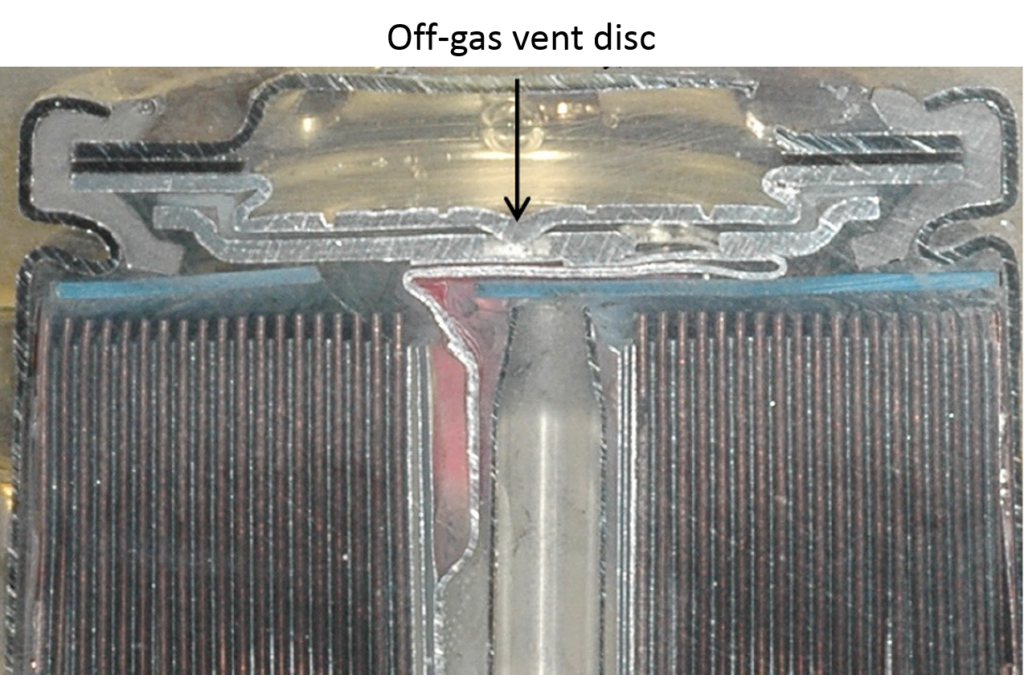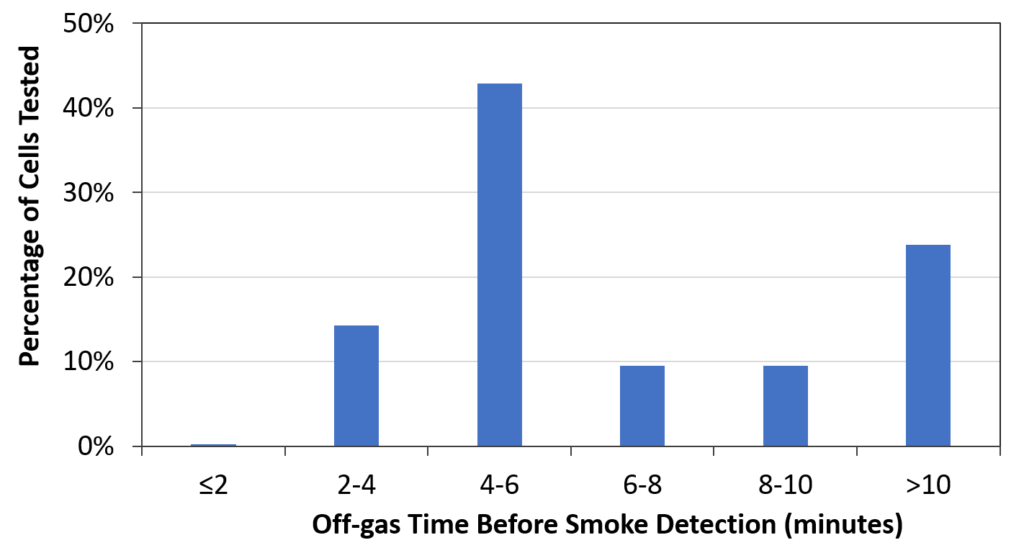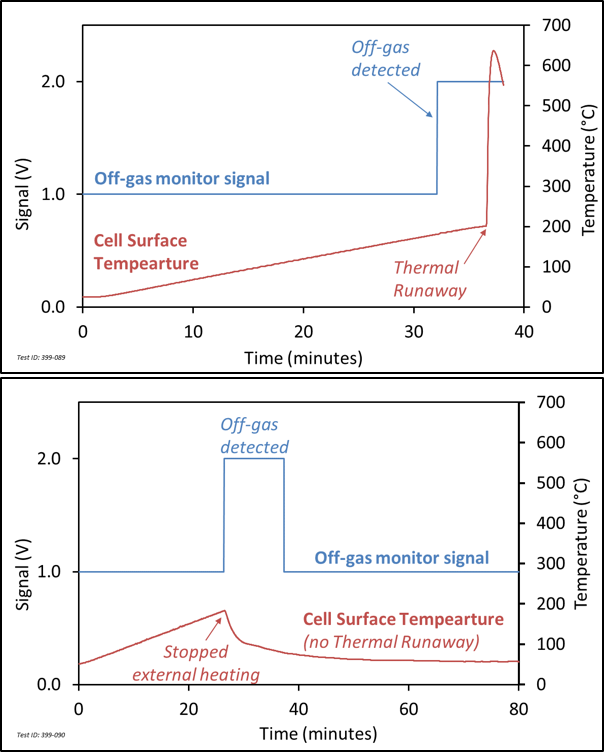Energy storage is a critical subject for our future. Alternative energy generation is receiving more investments, more installed capacity, and generating more recognition and public support than ever before. With more alternative energy, comes more energy storage, and more lithium-ion batteries.
Although the lithium-ion battery is an ideal solution for energy storage in many applications, their inherent instability is a cause for concern, especially in large-format batteries where cell-to-cell propagation can cause millions of dollars of destroyed property.
Today, lithium-ion batteries are a well-recognized technology. However, their use in conjunction with alternative energy is something very new. Solar and wind farms are linked to large-format lithium-ion batteries for storing the energy that is created by the wind turbines or solar panels. These types of products are sometimes tens of thousands of lithium-ion battery cells arranged to provide the proper storage capacity for these wind and solar farms.
Although the lithium-ion battery is the ideal solution for energy storage in many applications, their inherent instability is a cause for concern, especially in large-format batteries where cell-to-cell propagation can cause millions of dollars of destroyed property.
Li-ion Tamer has focused on increasing the safety of lithium-ion batteries by providing innovative solutions. Our solutions delivery early warning of battery failures by utilizing localized off-gas detection.
The Li-ion Tamer team performs battery failure tests regularly at our facility, which gives us a complete understanding of how lithium-ion batteries fail. Through this gained knowledge, we have designed the right kind of detection technology for lithium-ion batteries.

Cylindical cells, typically 18650s, are the most common form factor of lithium-ion battery cell. These cells, similarly to prismatic and other cells with rigid casing, are designed to include off-gas burst discs, which upon pressure build up, will release off-gas contents. The figure to the left, taken from the NFPA Hazards & Use document for lithium-ion batteries, shows the off-gas disc inside of an 18650 cell.
Off-gas monitoring can provide up to thirty minutes of an earlier warning than smoke detection.
Traditional methods of gas detection, such as smoke detection, would provide an indication of a lithium-ion battery failure once the failure has progressed to smoke generation (also see LFL monitoring vs off-gas monitoring blog post). However, off-gas monitoring would indicate upon the first sign of a battery failure, the off-gas disc bursting and releasing pressure from within the cell. Off-gas monitoring can provide up to thirty minutes of an earlier warning than smoke detection. These minutes gained through early detection can help prevent catastrophic battery failures. Below is a figure that shows the percentage of cells we have tested paired with the amount of early warning off-gas monitoring gives ahead of smoke detection.

We have found through our failure tests that off-gas monitoring can provide an earlier indication than other monitoring technologies besides smoke detection. We have found that in some cases off-gas monitoring can provide an earlier indication than voltage monitoring, which is a critical component of any lithium-ion battery management system. We have also found that if a mitigating action is taken upon the indication of our off-gas monitors, that thermal runaway can be avoided altogether
The graphs to the right show a successful thermal runaway mitigation test. In both tests, a 18650 cell is overheated. In the first test, shown in the top graph, demonstrates the true early warning capability of off-gas monitoring. It is shown that the off-gas monitor signal indicates at 32 minutes into the test, which is significantly earlier than when the cell enters thermal runaway, which occurs at 38 minutes into the test. During thermal runaway, smoke is generated, and the smoke detector was alarmed.
In the second test, external heating is stopped when the cell off-gasses, and it is seen that the cell surface temperature decreases back to the normal ambient temperature with time. This is a successful demonstration of being able to mitigate thermal runaway by taking action when the Li-ion Tamer off-gas monitor indicates an off-gas event has occurred.

While li-ion battery events are rare, they do happen. By recognizing this, we can take the necessary steps to improve our battery safety, handling, and usage, making the world a safer place. If you need help getting started, contact our lithium ion battery safety experts at info@liiontamer.com for a free battery safety consultation.
|
Learn more about how your batteries fail |
|
|---|---|
| Li-ion Tamer® offers a battery testing program for testing your batteries and providing valuable information on how they fail. Use the contact button below if you are interested in participating in this program. | |





